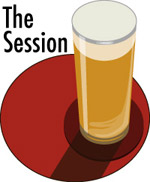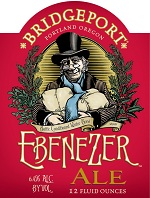Start with this premise: “It seems that in today’s uncertain and flagging America, one sign of community prosperity and revitalization is a microbrewery or brewpub in town.”
The Ecocentric blog examines in some detail the role of small breweries in towns where they operate. The history gets a little iffy now and then, but ultimately Kai Olson-Sawyer makes a point that “just like with food, conscientious consumers are willing to pay a little more for better quality and for the local connection.”
The leap of faith here is that local equals better quality. It’s one thing for a brewer to say, “I can order the best quality malt in the world, the best hops, source yeast that provides whatever flavor you want and replicate water from any brewing region of the world.” Another to say, “Fresh hops from the farmer up the road are just as good as from the Czech Republic or the Yakima Valley.”
To my way of thinking the first beer qualifies as local. But not everybody would agree.
This is tricky territory. I loved my grandfather’s farm. I’m all for the idea of urban farming, for finding fresh produce (in season) within the city limits. I wish all the luck in the world to those farmers from Vermont to Southern California who are giving hops a whirl. I’ve had beers I’d buy again that were dry hopped with stuff from homebrewers yards (and donated to a brewery). But I know full well how hard it is to properly grow, pick and process quality hops. Which means most of the breweries around the world are going to buy most of their hops from some place not so close.
In all fairness, the point at Ecocentric blog was not to make localness exclusive, but there are those who would. And that’s not any better for local beer than trying to come up with arbitrary definitions for “craft” beer.
More stuff to read:
– Boak and Bailey offer The six degrees of beer appreciation. “There’s a fine line between enthusing about better beer and being a snob.”
– 1 Wine Dude (Joe Roberts) calls “this the single most important piece of wine news in years” and the implications for beer should be obvious. Australian Wine Research Institute researchers have sequenced the Brettanomyces genome.
– The New York Cork Report gives us “Your Ultimate Guide to Pairing Beer and Cheese.” Hard to argue with pairing a fresh Catapano goat cheese and Southampton Cuvee des Fleurs.
 This is my contribution to The Session #58, hosted by
This is my contribution to The Session #58, hosted by  I’m partial to Alistair Sim from the 1951 film Scrooge (and later in the voice in an animated TV version of A Christmas Carol). Who wouldn’t want to buy a beer for a “sad-faced actor, with the voice of a fastidious ghoul?”
I’m partial to Alistair Sim from the 1951 film Scrooge (and later in the voice in an animated TV version of A Christmas Carol). Who wouldn’t want to buy a beer for a “sad-faced actor, with the voice of a fastidious ghoul?”